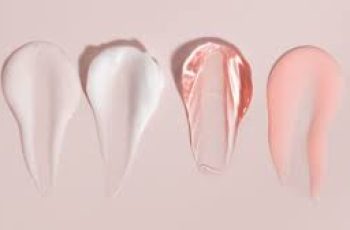
What strength of retinol do you need?
Retinol is a skincare ingredient that has been shown to provide impressive anti-aging results that everyone can benefit from. Due to varying effectiveness, this powerful ingredient comes with some instructions for use, and if not used correctly, it can cause skin reactions such as dryness, flaking, and irritated areas. While this may sound confusing, it will become easier to understand after reading this blog post, as we will provide you with some information on which strength of retinol you need.
How much retinol is the right amount?
It all depends on a lot of factors, such as: B. Your skin type and your concerns. Retinol products come in a variety of different strengths and textures, making it easier for you to find the right one for your needs. As mentioned before, it’s best to follow some precautions regarding retinol, especially when applying the product to your skin for the first time. Retinol percentages range from 0.01% to 2%. Opting for a lower strength when starting a retinol regimen will allow you and your skin to adjust without causing any reactions or irritation. Here are the best ways to ease retinol into your daily routine:
Start with a lower strength to allow your skin to get used to the product.
Start by using it once a week in the evening.
If you don’t experience any irritation, use it twice a week in your evening routine.
Gradually increase until you can eventually use it every night.
Once your skin is used to this percentage, you can start using higher strengths.
Follow steps 2, 3, and 4 with your new retinol to improve your skin’s tolerance.
Although retinol is a proven anti-aging product, it is always recommended to combine it with a blend of ingredients like AHA or BHA to rejuvenate and rejuvenate the skin while improving the appearance of fine lines and wrinkles.
If you want to learn more about retinol and the results associated with it, you can read our blog post on the benefits of retinol for skin care.
Low Concentration Retinol
If you are using retinol for the first time, this should be the starting point. If you have a sensitive and dry skin type, you will also notice many benefits when using this concentration.
Using low-concentration retinol blended with other ingredients like antioxidants, AHAs, and BHAs protects your skin from daily stressors like pollution, dirt, bacteria, and debris that can clog pores and prematurely age your skin. As your skin builds tolerance to retinol, you’ll notice results like:
Smaller pore size and visibility
Increased collagen and elastin production
Reduces fine lines and wrinkles
Radiant, youthful complexion
Reduces pigmentation and uneven skin tone
Improves uneven texture
You’ll find that all the benefits of retinol and its effects on their own produce these results.
Always remember: Use SPF during the day, even on cloudy and rainy days, as UVA rays are constantly present and can damage the skin.
Medium Strength Retinol
Once your skin gets used to the lower strength retinol, you can now switch to medium strength retinol, which typically has a percentage between 0.04% and 0.3%. If you’ve found that a lower concentration of retinol isn’t producing the desired results for hyperpigmentation or uneven skin tone, now’s the time to really notice a difference. Give your skin some time to develop a new tolerance to the stronger formula and use the same routine as before, slowly introducing once a week, then twice, and so on. You should start to see results after 8 to 12 weeks.
Another benefit of retinol is that you can use it around your eyes, too. There are eye serums and creams specifically formulated to reduce fine lines and wrinkles in this area. Apply to the under eyes and under the brows to tighten and regenerate sensitive skin. Retinol doesn’t exfoliate, so you don’t have to worry about thinning your skin. You’ll notice improved collagen and elastin production for a plumper, more youthful-looking face overall.
High Potency Retinol
Once you’ve reached the point where you can move on to the highest concentrations, your skin should be fully acclimated to retinol. Higher concentrates range from 0.5% – 1% and are very effective for correcting sun damage that lower concentrates can’t fully treat. For skin prone to impurities and skin with large pores, high doses of retinol can also provide significant relief from these skin issues.
Never use high doses of retinol unless you start with a lower concentration. If you don’t allow your skin to build tolerance to such a strong product, you may experience skin reactions such as an inflamed rash. Itching and flaky patches, to name a few.
Can I use AHAs and BHAs with retinol?
It is completely safe to use retinol with other skin ingredients like AHAs and BHAs. You’ll find that you get the best results when you alternate products, such as using a face wash with glycolic acid (AHA) in the morning, or a serum with salicylic acid (BHA) in the evening, followed by retinol. Try not to overload your skin with too many products, and instead try to gradually introduce a balanced and effective skin care routine over time. If you’re wondering which acid is right for your skin, read our blog post on AHAs and BHAs.
Now that you have a clear understanding of Retinol and its various benefits, you are ready to start your skin journey, and as exciting as it may be, always remember that slow and steady wins the race to a radiant face!


